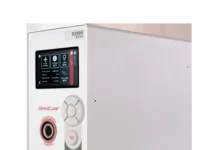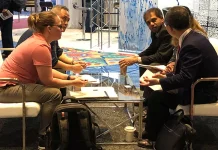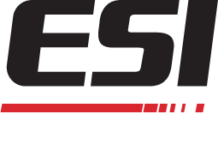
With attendance up five percent over the 2014 event, RadTech 2016 has been deemed a success. More than 80 exhibitors and 1,400 attendees gathered in Chicago for three days in May to discuss the latest innovations in the ultraviolet and electron beam industries, while also celebrating a number of award honorees.
Panels addressed food packaging, 3D printing, innovation
High-profile panels at RadTech 2016 brought together UV/EB users and suppliers to discuss the emerging impact of the technology in diverse applications.
The Food Packaging Panel contained a mix of industry experts in the formulator, regulatory and legal arenas, as well as a CPG company, Nestlé. While there were some light-hearted moments, Nestlé made a serious proposal that there should be complete transparency of all ink/coating/adhesive/press chemical raw materials to Nestlé via nondisclosure agreements. In addition, there were some somber moments as the panel discussed the prospect of intervention by governments of new laws regarding migration, the potential of over-regulation and the process of establishing uniform standards for food packaging print around the world. These are all tough problems and complex issues, but the first step to resolution is to get them on the table where knowledgeable experts can propose potential solutions. (Commentary by Don Duncan, session chair, Wikoff Color)
The 3D Printing Panel discussed the latest advancements in 3D printing using UV technologies. Thought leaders in materials, equipment and end uses for UV technologies in 3D Printing participated, including Victor Latour, supervisor of digital design, Stoopid Buddy Stoodios; Sumeet Jain, director market development, Arkema Inc., Sartomer Business Unit; Lance Pickens, CEO and founder, MadeSolid; Mike Idacavage, vice president, business development, Colorado Photopolymer Solutions; Brian Adzima, materials scientist, 3D printing, Autodesk; and Alex Mejiritski, president, Spectra Group Limited.
Awards presented for service, innovation and education
Service

David Harbourne of Heraeus was honored for his longtime leadership and service to RadTech and the UV/EB community. This is only the second time RadTech has bestowed such recognition.
Student Awards
RadTech has developed several initiatives to engage and support students, with over 40 students attending RadTech 2016 as guests of the organization. These students also will be offered gratis membership in the association, and two student competitions were held.
Posters

RadTech partnered with the Technical Association for the Graphic Arts (TAGA) in offering awards to students who developed posters showing the benefits of UV/EB technologies. The first place winner is featured on the cover of this magazine.
First Place: Austin Smoldt-Saenz, University of Iowa. Smoldt-Saenz is a recent graduate from the University of Iowa with a BFA in Graphic Design.
Second Place: Maria Padron, University of Iowa. Padron is a designer and artist, originally from Cordoba, Argentina, who earned her M.A. in Art from the University of Iowa in May.
Experiments
RadTech challenged college students to create a fun, interesting experiment that showcased UV-curable materials and would be suitable for high school classrooms. Participants submitted a lab manual, as well as video demonstrations, which can be viewed by visiting YouTube.
First Place: Sierra Dell, Penn State York; Professor Andy Landis. Dell is entering her senior year at Penn State York in pursuit of a bachelor of science in biology.
Second place: Ozlem Kubra Akdogan, Eastern Michigan University; Professor Vijay Minnari. Akdogan is a polymer engineer, pursuing a master’s degree in polymers and coatings. She is a member of Dr. Mannaris green chemistry and engineering team, with a research interest in improving design, synthesize and formulation of bio-based UV curable coatings.
Papers

More than 100 abstracts were received for presentations for RadTech 2016. The RadTech Technical Committee carefully reviewed and commented on all of these abstracts, helping to achieve high standards for the RadTech Technical Conference. The committee also was responsible for selecting the Best Paper Awardees.
Best Student Paper: Sara Kaalberg, University of Iowa; Co-Author: Professor Julie L.P. Jessop
Paper Topic: Combining Oxiranes and Oxetanes to Enhance Kinetics and Improve Physical Properties
Best Paper: Marika Morone, IGM Resins; Co-Authors: Andrea Bernini Freddia, Gabriele Norcinia
Paper Topic: Design of New 3-Ketocoumarins for UV LED Curing
Innovation awards
RadTech 2016 also recognized companies that use UV/EB technologies. At the RadTech 2016 awards dinner, several innovative, cutting-edge applications were celebrated.
Continuous Composites (CC3D)
CC3D has developed a new 3D printing process to print continuous fiber with UV-curable resin; they are reportedly the only company in the world 3D printing continuous fiber with thermoset epoxy and the only company to successfully print continuous fiber into free space. With a focus on functional composites additive manufacturing to scale, CC3D is providing an industrial solution to advanced manufacturing techniques of mid to large scale.
PepsiCo
Seeking to lower its carbon footprint, Pepsico is looking to EB-flexo inks as a replacement for the use of solvent-based materials for snack food packaging. Technological developments around EB ink chemistry are creating stunning advances in print quality and aesthetics. Pepsico reports the use of EB technology reduces VOC emissions as much as 90%, with lower energy consumption when compared to conventional thermal drying. EB is considered food friendly, which enables Pepsi to make attractive, environmentally compliant packaging that is cost neutral when compared to incumbent solvent and thermal drying technologies.
Cleveland Steel Container
Cleveland Steel Container has developed the first commercial inline EB and UV process for rigid steel coil substrates in the manufacture of steel pails. CSC is the largest steel pail manufacturer in North America, with uses ranging from hazardous materials to cosmetics. CSC applies and cures EB and UV directly to steel coil for 5-gallon pail lids and bottoms. Beyond a dramatic reduction in energy requirements, CSC reports that since EB coatings are 100% solids formulations, it means no loss of evaporated solvent from the applied coating. It also means less coating usage and required storage area compared to solvent systems.
Wavefront
In a very innovative use of UV curing, Wavefront makes state of the art holographic films using advanced roll-to-roll continuous UV casting lines to manufacture nano/micro structure embossed films on a variety of film substrates. This capability allows WFT to manufacture micro-structures from 200 nanometers up to 150 microns. These unique structures can only be achieved using the latest UV curing and formulating technologies.
HRL Laboratories LLC
The HRL team demonstrated the first ever UV additive manufacturing of polymer-derived ceramics. By formulating pre-ceramic UV-curable polymers, the team at HRL demonstrated the first-ever additive manufacturing of fully dense, binder-less ceramics, published in the 1/2016 issue of Science. Potential applications for this novel technology include turbine engine components, hypersonic vehicle structures, MEMS devices and electronics packaging.
NOVAGARD Solutions
Novagard has developed the first industrial UV LED PSA installation on a coating line. Novagard converted a water-based PSA to a UV LED-curable PSA and now is using it to produce PVC foam rolls (more commonly known as weather stripping). The system consists of two 62″ wide banks of UV LED curing systems. Conventional UV lamps could not be used as they delivered too much heat to the substrate causing damage. UV LED was the only viable solution, allowing Novagard to pursue new market opportunities.
Carbon 3D
Carbons vision is a future fabricated with light, where traceable, final-quality parts are produced at scale with CLIP technology. CLIP Continuous Liquid Interface Production makes this possible by combining engineering-grade materials with exceptional resolution and surface finish. CLIP eliminates the shortcomings of conventional 3D printing by more rapidly producing objects. From everyday products like tennis shoes and electronics to industrial components to highly customizable medical devices, CLIP makes it possible for creators to design the parts and products of the future.
City of Cleveland
The City of Cleveland, including Clevelands Progressive Field ballpark, home of the Major League Cleveland Indians, was recognized for its exploration and use of UV-curable materials as a contribution to environmental sustainability in Cleveland. The city has found UV technology solutions to long-standing issues for protection against corrosion and to provide superior protection for metals, concrete, stones and other substrates in an efficient and fast curing manner.
RadTech Announces “Accelerator Award”

In recognition of the increasing interest in the development of sustainable new materials and processes, RadTech now offers an Accelerator award to recognize innovative ideas and start-ups. The goal of RadTech is to recognize and publicize the work of new ventures.
The inaugural award winner is Poly6 Technologies. Poly6 turns citrus rinds into bio-based materials, called Citrene™. This start-up is introducing clean and sustainable materials for use in performance applications. Citrene™ has gained traction in various industries due to its unique combination of performance, process ability and sustainability advantages, offering enhanced performance, natural materials, throughput benefits and low GHG emissions all enabled by UV/EB technology.






